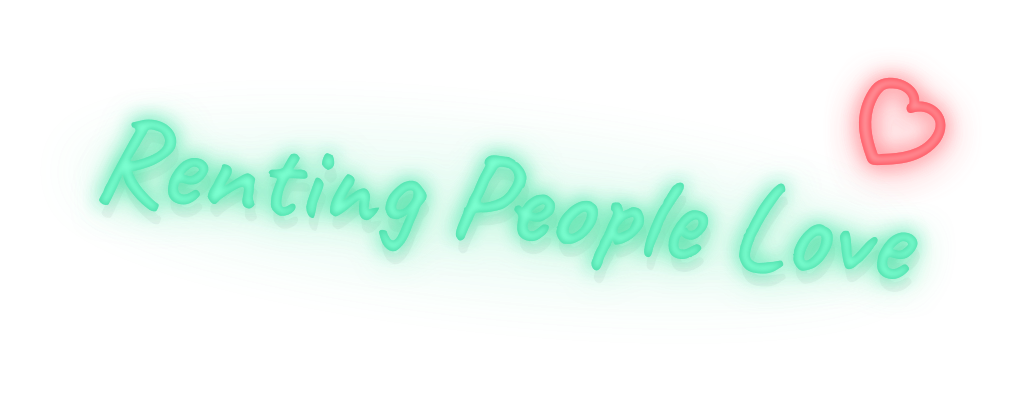Property Management
Will Property Management Fees Hurt My Cash Flow?
Last Updated Jul 20, 2022


Table Of Contents
- How to calculate cash flow
- How to look beyond cash flow for a complete financial picture
- Cash-on-cash return
- Factors that contribute to negative cash flow
- Ways to minimize the likelihood of negative cash flow
- How the right management strategy will maximize cash flow
- How to evaluate Belong against property management
Due to high costs and hidden fees, traditional property management companies can negatively impact your cash flow and ROI. However, Belong offers homeowners a modern alternative to property management that’s much better for cash flow.
Carefully calculating cash flows alongside other financial metrics will allow you to estimate rental management expenses. With this information, you can evaluate the positive potential financial impact Belong can offer homeowners.
How to calculate cash flow
Cash flow is an essential financial indicator for anyone renting out a home. It’s part of a bigger picture that helps you assess the costs and profitability of managing your rental home. You can calculate the cash flow of your rental property using a simple formula.
Cash Flow = Total Income – Total Expenses
In calculating your cash flow, it’s essential to account for all the expenses associated with your property. These include, but are not limited to:
- Mortgage
- Taxes
- Insurance
- Mortgage insurance
- Vacancies
- Repairs
- capital expenditures
- HOA fees
- Property management fees
How is cash flow related to the ROI of a rental property?
A cash flow analysis provides critical information for understanding the return on investment (ROI) of a rental property. Ideally, you’ll want your rental home to have a positive cash flow. A positive or gross cash flow confirms that you are bringing in more money than it costs to pay for and manage your rental home.
If your rental home generates a positive cash flow, you can use it to calculate the return on investment for that property. Calculate the ROI of your rental home by dividing the annual return by your actual expenses, which include the down payment, closing costs, and any home improvements.
What’s a good cash flow or ROI for a rental property?
An accurate cash flow analysis and ROI calculation will provide a critical indicator that can help you create a better financial plan. While each individual will have different goals and priorities, an ideal ROI is about 8%. Depending on your individual circumstances, an ROI of 6% can also be good.
How to look beyond cash flow for a complete financial picture
Once you’ve calculated the cash flow and ROI for your current or potential rental property, you can consider other financial metrics to provide more context for your investment.
50% Rule
The 50% Rule offers real estate owners and investors a shortcut for calculating the ROI of a rental property. The rule assumes that 50% of your rental income will go towards operating expenses. Expenses include property taxes and insurance but do not include principal or interest payments.
The 50% Rule should not be used in place of past expense calculations, as historical data will always provide the most accurate insights. However, you can use it as a benchmark in evaluating rental properties. If you plan to use the 50% Rule, we highly recommend that you also use other financial metrics to assess the financial well-being of your rental home.
1% (or 2%) Rule
If your rental home currently has a mortgage, the 1% Rule (or 2% rule, both are common) is a helpful way to evaluate how the property can provide you with the desired cash flow and ROI. The rule suggests that the monthly rental income should equal or more than one-two percent of the purchase price. While the rule is not comprehensive and is often considered outdated, it offers a good starting point for assessing how much rent to charge.
At Belong, we use even more data to consider current trends, market, and real-time property value to identify the best listing price. We also understand that local charms, unique features, and the community can impact pricing. We help you get the ideal pricing to achieve a positive cash flow.
Read More: How to price your home on the rental market
Cash-on-cash return
One of the most critical real estate calculations used to evaluate the ROI of a property is cash-on-cash return. This metric measures the return on investment for a limited time, typically a year. You can also use a cash-on-cash return or cash yield calculation to forecast future earnings and expenses.
Cash-on-Cash Return= Total Cash Invested/ Annual Pre-Tax Cash Flow
A cash-on-cash return is the percent of the investment you make back on this year in cash flow. Essentially, the pre-tax calculation looks at cash flow in relation to the amount of money that has been invested in the property. Cash-on-cash measures the return on the invested money, making it ideal for properties with long-term debt borrowing.
Factors that contribute to negative cash flow
You should continually calculate cash flow to assess a rental property’s financial success. Often, successful rental homeowners can be financially derailed thanks to a few specific factors.
Poor cash flow calculations at the time of purchase or rent
If you have used financial metrics incorrectly or poorly estimated potential cash flow for a rental property, it’s hard to course-correct. You may be able to reduce expenses or increase rental pricing to rectify the situation. Still, you’re unlikely to recoup all losses. Carefully calculating financial estimates is critical for avoiding negative cash flow.
Extended periods of vacancy
Every week or month that your rental home goes unleased will negatively impact your overall cash flow. It’s essential that you quickly prepare, list, and market your home to attract ideal residents.
Did you know Belong homeowners get guaranteed rent, even when their home is vacant? Learn more about Smooth Payments™ and see if you qualify here.
Maintenance costs, delays, and issues
Maintenance can be a cash flow and budget breaker. While it’s challenging to plan for unforeseen expenses, it’s often delays, unresponsive service providers, and complex repairs that affect cash flow most.
Ways to minimize the likelihood of negative cash flow
With help, you can reduce the likelihood of negative cash scenarios. Limiting the risk of a negative cash flow requires a focus on:
- Maximizing the rental price
- Conducting regular, preventive maintenance and finding competent, experienced professionals who complete work quickly and cost-effectively.
- Regularly inspecting the rental property.
- Limiting vacancy and resident turnover by screening and identifying high-quality tenants
- Making improvements that will encourage residents to pay more
While you can execute these responsibilities, a trusted management partner can help guide you through the process and reduce the probability of negative outcomes.
How the right management strategy will maximize cash flow
While you may be tempted to avoid additional costs, the right solution can help you maintain or increase cash flows and ROIs.
Rental pricing and residents
With more information and experienced guidance, you can expertly price your rental home, allowing you to attract the best, most qualified residents. High-quality residents who pay expertly-priced rent are more likely to stay long-term, reducing the likelihood of vacancy.
If you’re overwhelmed by the prospect of finding high-quality tenants, Belong can help you find residents who will love your home as much as you do. We take the photos, create a 3-D virtual walkthrough, and facilitate open houses and tours.
Maintenance and regular inspections
While maintenance will be an expense for all homeowners, it’s possible to reduce this cost by conducting regular inspections to reduce the frequency of significant issues. A team of experienced professionals is more likely to complete work on time, under budget, and to a higher standard. Thankfully, Belong has a team of experienced, full-time Pros on call who conduct regular property maintenance and 24/7 emergency service.
Freedom from management responsibilities
You should consider the time, energy, and effort required to manage every aspect of your rental home. It may be easy for those with experience to add rental property management to your list of responsibilities. For others, every aspect of rental management, including the financials, may be new. The right management strategy will depend heavily on your skills, experience, and availability.
Understanding property management fees
Finding the right management strategy to ensure a positive cash flow requires careful consideration of costs. Traditional property management comes at a wide variety of prices and sometimes includes hidden fees. If old-school management sounds like a good choice for you, carefully interview each company to understand their costs.
Common management fees can include:
- Management fees (6-10%)
- Placement fees (100%)
- Maintenance Markup (20%)
- After-hours & holiday (+25%)
- Renewal fees ($200+)
- Account set up fees ($500+)
- Inspection fees ($150+)
- Advertising/marketing fees ($150+)
- Eviction fees ($5000-$8000)
How to evaluate Belong against property management
Belong is transforming the world of property management to offer homeowners valuable, transparent, and people-centered solutions for their rental homes. We’re not your oldschool, out-of-touch property management company.
Management fee = 6% of rent ($200/mo. minimum – $599/mo. maximum)
Placement fee (months of rent) = 50%
- 0% Management Fee
- 0% Maintenance Markup
- No Initial Set Up Fee
- No Inspection Fee
- No Pricing Analysis Fee
- Free Photoshoots
- Free 3D & Virtual Tours
- No Advertising Fees
- No Eviction Fee
- No Move-In/Out Fees
- No Tax Document Fees
- No Lease Renewal Fee
- No Commitment to Sell
Maintenance expenses, management, and placement fees are tax-deductible.
With Belong, there are no hidden fees. We care for your home, offer rent guarantees, 24/7 concierge-level support, and a hassle-free experience.
About The Author
Jordan Newsom
Jordan Newsom is a highly-caffeinated writer who loves delighting readers, using content to teach, and broadening perspectives. When she's not behind a computer screen, she's hunting down the best coffee shops, breweries, and restaurant patios in Denver, Colorado.




